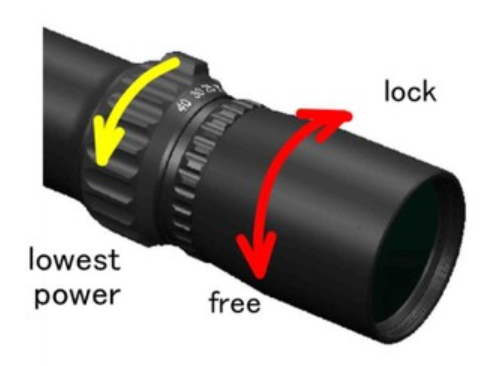News Category
Archive
Newly Posted
-
Congratulations Benoit Vautour for becomming 2025 Canadian F-TR National Champion!
Posted 07/15/2025
-
Congratulations Jonny Ingram for shooting 200:19X at a Bayou Rifles F Class competition in Texas!
Posted 07/15/2025
-
Congratulations to Gary Costello for winning 1st place at Round 4 of the GB National F Class League!
Posted 07/03/2025
How to adjust the Eyepiece – with Q&A
Posted 05/26/2020
You may be familiar with this, but it’s nice to refresh one’s memory by going back to basics.
Today I would like to explain how to adjust the eyepiece on your March riflescope.
After properly mounting the rifle scope, it is critical to adjust the eyepiece to your vision.
By adjusting the eyepiece, you will be setting the right diopter value which differs by person.
The goal of adjusting the eyepiece to the proper diopter setting, is to see the reticle clearly and crisply.
The factory setting of the eyepiece is indicated by the white line.
This is set at -0.5 diopter.


1. Rotate the body of eyepiece counter-clockwise until the eyepiece knurled locking knob moves freely.
Rotate the knurled locking ring clockwise to provide range for the body move during adjustment.
2. Look at a white featureless wall, a blank sheet of paper preferably at a distance of 4-8 inch (about 10-20 cm) ,
at the lowest magnification setting.
Please set the side focus to infinity.
The diopter setting can be adjusted from – 2 to +2.
If you are near-sighted, rotate the eyepiece body in the – direction, counter-clockwise.
If you are far-sighted, rotate the eyepiece body in the + direction, clockwise.
Do not stare at the reticle for more than a few seconds while adjusting,
take many quick looks as you adjust until you get the best, crispest view of the reticle.
※If you have prescription glasses and you will be wearing them while shooting,
we recommend that you adjust the eyepiece while wearing them.
3. When the reticle is focused for your vision, rotate the knurled locking ring
counter-clockwise until it meets up with the eyepiece body to lock the setting in place.
It should be firm but make sure to not overtighten.
Once the eyepiece is set at the best position of your vision, it’s not necessary to alter the setting unless your visual acuity changes.
Now you are all set with adjusting the eyepiece!
I received a question/opinion after I posted. Thank you for the great questions!
Q1 : Why use the lowest magnification for adjustment ?
A2 :Take a camera for an example. When you take a picture with a single‐lens reflex camera
and when you stop down the aperture (diaphragm), scenery before and behind comes out well.
If you open the aperture, single point will be in focus and the scenery before and behind can be blurred.
When adjusting the eyepiece of a rifle scope, focus adjustment is irrelevant.
The only aim of adjusting the eyepiece is to see the reticle through the eyepiece and to adjust in order to see the reticle clearly.
When set at higher magnification of the scope, there is less light on the reticle surface.
This is the same as when camera aperture is stopped down.
At lower magnification of the scope, there is more light coming in on the reticle surface
and is the same as when the camera aperture is open.
The amount of light taken in on the reticle surface differs by magnification and also the foal depth will differ.
With lower magnification, focal depth of eyepiece is shallower and it is easier to find the focus position.
This is why we recommend to adjust at the lowest magnification.
Q2 : I prefer fast focus eyepeice to lock-ring method.
A2 : In order to adjust the eyepiece/diopter, March Scopes adopts 2 types :
lock-ring type with fine pitch, and fast focus eye piece.
With fast focus eyepiece there is a merit that the diopter can be adjusted quicker
because the diopter position will change with smaller rotation of the eyepiece.
If the scope is used by a same person there is no need to change eyepiece frequently.
Therefore March Scopes thinks that after adjusting, the eyepiece should not move and it should be locked by a lock-ring.
When taking out of your gun case or when running around in the hills and fields there is a risk of the eyepiece moving.
So that is why our fast focus eyepiece too has a locking ring too in order to avoid risks.
Written by : Mari Morita

